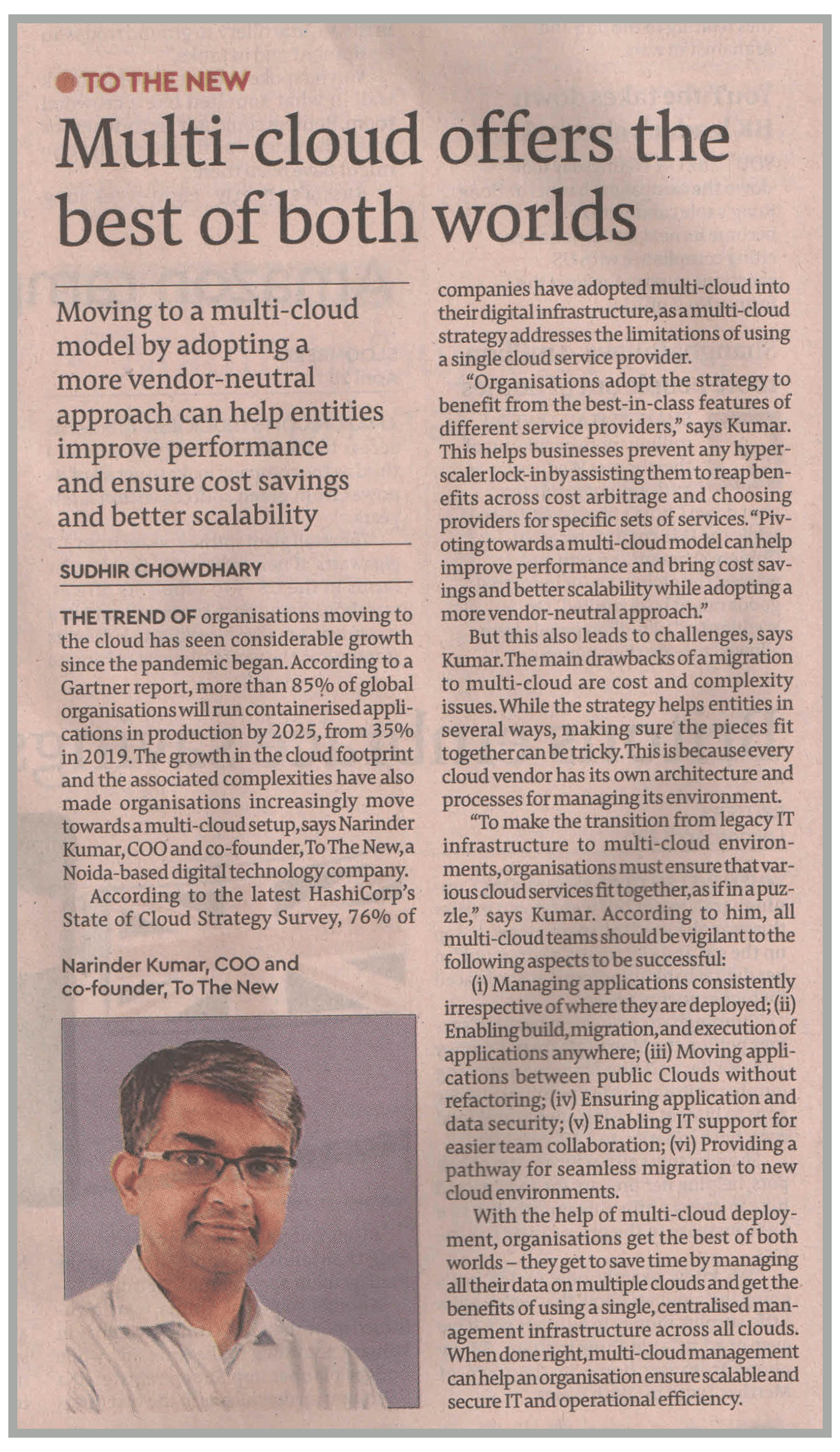Multi-cloud offers the best of both worlds
By Narinder Kumar (Co-founder & COO, TO THE NEW)
The trend of organisations moving to the cloud has seen considerable growth since the pandemic began. According to a Gartner report, more than 85% of global organisations will run containerised applications in production by 2025, from 35% in 2019. The growth in the cloud footprint and the associated complexities have also made organisations increasingly move towards a multi-cloud setup, says Narinder Kumar, COO and co-founder, To The New, a Noida-based digital technology company.
“Organisations adopt the strategy to benefit from the best-in-class features of different service providers,” says Kumar. This helps businesses prevent any hyperscaler lock-in by assisting them to reap benefits across cost arbitrage and choosing providers for specific sets of services. “Pivoting towards a multi-cloud model can help improve performance and bring cost savings and better scalability while adopting a more vendor-neutral approach.” But this also leads to challenges, says Kumar. The main drawbacks of a migration to multi-cloud are cost and complexity issues.
According to him, all multi-cloud teams should be vigilant to the following aspects to be successful:
- Managing applications consistently irrespective of where they are deployed
- Enabling build, migration, and execution of applications anywhere
- Moving applications between public Clouds without refactoring
- Ensuring application and data security
- Enabling IT support for easier team collaboration
- Providing a pathway for seamless migration to new cloud environments.
With the help of multi-cloud deployment, organisations get the best of both worlds – they get to save time by managing all their data on multiple clouds and get the benefits of using a single, centralised management infrastructure across all clouds.
Read the full article here.

